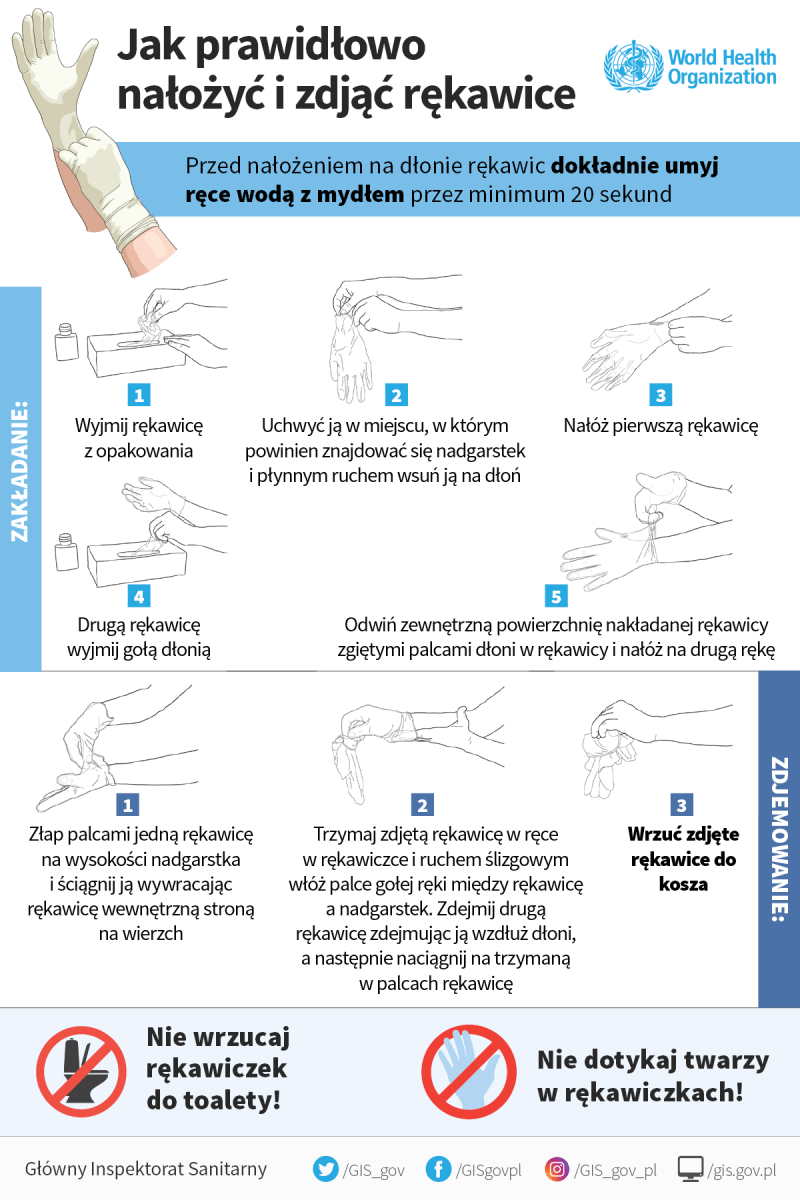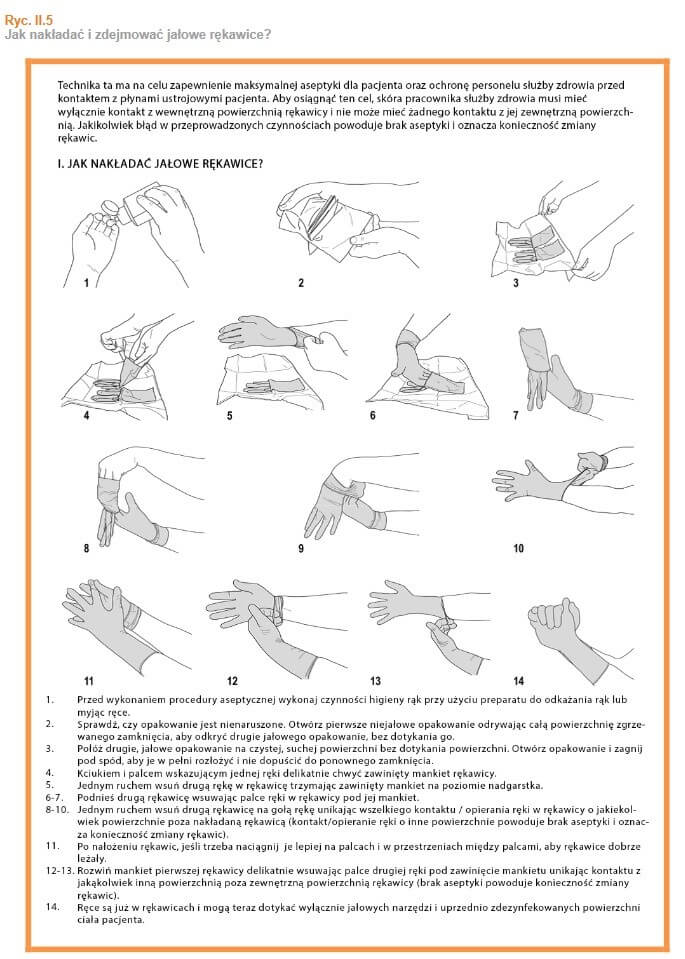lic. rat. med. Jerzy A. Kozłowski
Single-use gloves are the basic protection against contaminants and disease-causing agents that can be transmitted through the hands. They serve as an effective barrier, but only when certain guidelines for glove usage are followed. Knowing how to properly use gloves is relevant not only for healthcare workers but also in everyday life, especially during the COVID-19 pandemic.
Do gloves provide sufficient protection?
It may seem that wearing single-use gloves is sufficient, but this false sense of security poses a significant risk. Failure to adhere to hygiene and safety guidelines can make gloves a carrier of infections because we tend to be less cautious while using them.
Single-use gloves whether latex, nitrile, or vinyl, are primarily designed to protect the person wearing them – they are part of protective clothing. They do not replace hand higiene [1], conducted through washing or disinfection, and should not be a basis for disregarding safety measures.
To ensure that single-use gloves provide effective protection, they should be worn whenever there is a reasonable probability of coming into contact with potentially infectious materialGloves should be changed after contact with contaminated surfaces or objects and should not be reused [1]. During this time, one should refrain from touching the face and other uncovered parts of the body.
Read also When should gloves be worn?
Sometimes, contamination or the transfer of infectious material to the skin can occur during the process of putting on gloves. Therefore, to ensure effective protection, it is important to know how to use gloves.
Single-Use Gloves – Rules for Putting On and Taking Of
To maintain cleanliness and avoid contaminating either the skin or the gloves, it’s essential to wash your hands thoroughly with soap and water or use a hand sanitizer before putting on gloves. Then, remove a glove from its packaging, holding it by the cuff (where the wrist should be) and slide it onto one hand in a smooth, continuous motion. Try not to touch any other parts of the glove, especially the fingers, with your bare hands. Afterward, remove the second glove, turning the outer cuff part inside out, and put it on the other hand [2].

Image source:
Chief Sanitary Inspectorate
While wearing gloves, do not touch your face or exposed areas of your body. After completing a task, dispose of them in the appropriate waste container. To safely remove gloves, grasp the cuff with your fingers at the wrist level to avoid touching your skin. Then, peel it off, turning it inside out. Hold the removed glove in your still-gloved hand, insert your bare fingers under the glove, and with one motion, roll it off from the inside [2].
Jeżeli rękawice miały kontakt z krwią lub płynami ustrojowymi, należy je wyrzucić do pojemnika na odpady skażone. W przypadku zwykłego użytkowania rękawiczki, gdzie ochrona dotyczyła miejsc nieskażonych biologicznie, rękawiczki można wyrzucić do kosza na odpady.
After removing the gloves, wash your hands with running water or disinfect them with an antiseptic solution.
The process of putting on sterile disposable gloves is somewhat more complex and requires proper precautions. The technique for putting on sterile disposable gloves is shown in the illustration below [1].

Image source:
Wytyczne WHO dotyczące higieny rąk w opiece zdrowotnej – podsumowanie” ©World Health Organization 2009 s.15
cmj.org.pl/clean-care/higiena-rak-wytyczne-who-draft.pdf
Gloves Safety Guidelines
- After removing single-use protective gloves, they must not be reused.
- Gloves should be used in any situation where it is necessary and reasonable. This is especially important during the COVID-19 pandemic, as restrictions require maintaining special hygiene measures when touching public surfaces such as doorknobs, handrails, shelves, groceries in stores, buttons, etc. [3].
- Gloves are only isolating material, so it is important to be aware that microorganisms and biological contaminants may be present on their surface.
- Use gloves in the appropriate size, made of material that provides effective protection and is non-allergenic. Latex or nitrile gloves are common. Do you know how to choose gloves??
- Follow the manufacturer’s instructions and recommendations.
Bibliography:
1. Wytyczne WHO dotyczące higieny rąk w opiece zdrowotnej – podsumowanie” ©World Health Organization 2009 WHO/IER/PSP/2009.07;
2. Główny Inspektorat Sanitarny, Koronawirus – jak prawidłowo nałożyć rękawice (03.04.2020);
3. Serwis Rzeczypospolitej Polskiej gov.pl, Koronawirus – informacje i zalecenia (31.03.2020);
 Polski
Polski